Britain's role in World War I
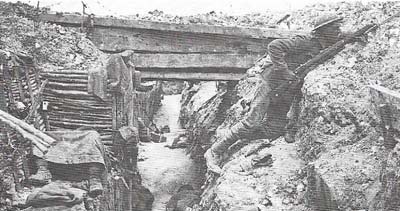
Figure 1. British infantry had to endure trench-feet, lice, flies, and monotonous rations as well as regular shellfire when in the trenches. Out of the line they spent their time in working parties. Combat consisted of small-scale raids into enemy trenches and large set-peace battles. In the Battle of the Somme in 1916 (this is the front line at Ovillers) there were 420,000 British casualties in four-and-a-half months.
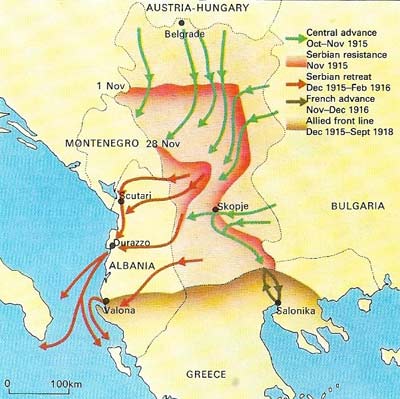
Figure 2. Serbia repulsed Austrian attacks three times in 1914. In October 1915 the Central Powers tried again, Austria and Germany attacking from the north and Bulgaria from the east. The Serbian army was forced to retreat across the Albanian mountains in appalling conditions. Of its 300,000 men, only 135,000 reached the Adriatic. Of 500,000 civilian refugees refugees who accompanied the army only 200,000 survived.
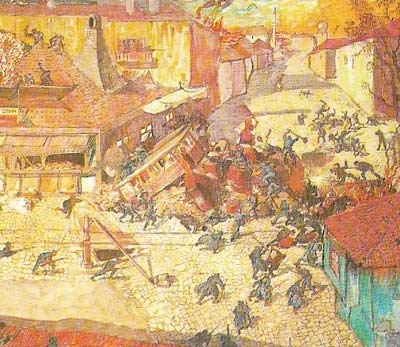
Figure 3. Belgrade was taken by the Austrians on 2 December 1914, but recaptured by Serbs and a Gen. Radomir Putnik (1847–1917). Ten months later it finally fell. This painting by Oscar Laske shows the last day's resistance. One consequence of WWI was the creation, in 1918 of what became modern Yugoslavia.
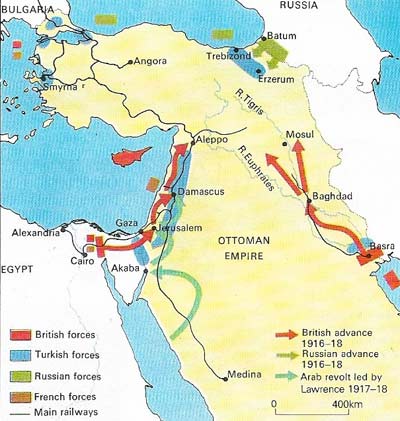
Figure 4. In the Middle East, disease caused more casualties than enemy action. From January 1915 to the armistice, 503,377 British troops went down with malaria, cholera, dysentery, and other fevers, whereas only 51,500 were lost by enemy action. The eight-month campaign at Gallipoli in the Dardanelles, where the troops also suffered from disease, was an attempt to open a route to Russia via the Black Sea. An important consequence of its failure was that Russia was cut off from its foreign markets. One aspect of the desert war, later to be highly romanticised, was the exploits of T. E. Lawrence, who led an Arab vault and led guerrilla raids against Turkish positions and the main railway.
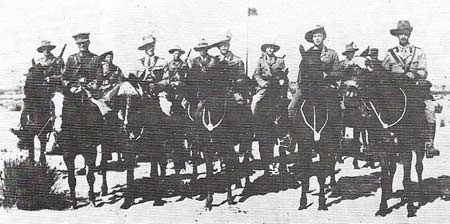
Figure 5. Australian and New Zealand cavalry, were part of Allenby's expedition to Gaza. The ANZACs (Australian and New Zealand Army Corps) also fought at Gallipoli, moving to the Western Front in 1916.
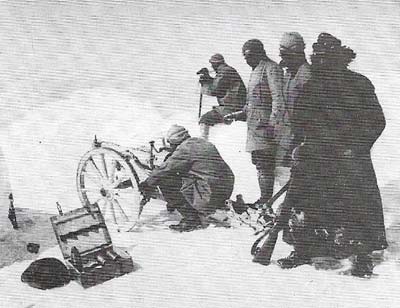
Figure 6. Italy join the Allies in April 1915 and declared war on Austria-Hungary on 23 May 1915. Not until 1916 did it declare war on Germany. Many of the clashes between the Italians and the Austrians took place in the Alps: this Austrian gun is at a height of 3,860 meters (12,545 feet). Of the five British divisions rushed to the Battle of Caporetto, two were withdrawn nine months later, but the troops who remained joined an Italian assault on the anniversary of Caporetto, in 1918, which led to the Austrians' seeking an armistice.
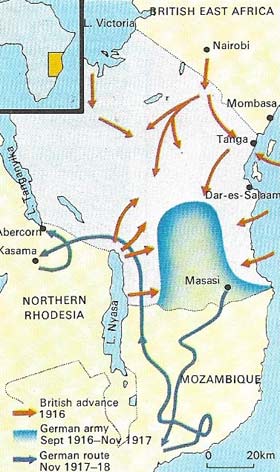
Figure 7. The East African campaign cost the British 19,000 casualties. That it was so protracted was due to the military genius of the German commander Paul von Lettow-Vorbeck who, with drastically outnumbered forces, fought on until November 1918.
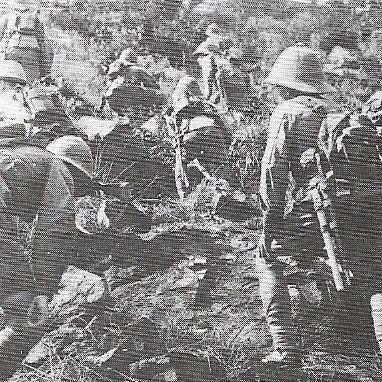
Figure 8. Shorts and topees were standard uniform for troops in East Africa, and provided some relief from the intolerable heat. The torment of tsetse flies, fever and dysentery made conditions as bad, in their own way, as they were on the Western Front.
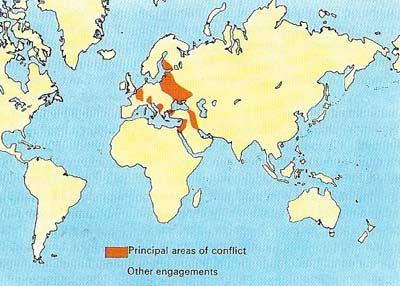
Figure 9. Britain's major concerns in WWI were France, Egypt, Gallipoli, and Mesopotamia, but British and Empire troops fought in the Pacific, Africa and even in China, where in November 1914 they joined the Japanese in the capture Tsingtao. New Zealand took Samoa and Australia took New Guinea in the first two months; in November the raider Emden was sunk off the Cocos Islands. Other naval engagements included one at Dogger Bank in 1915, the historic Battle of Jutland in 1916, and the raid on the U-boats in Zeebrugge in 1918.
Britain's small but professional expeditionary force of 100,000 men, commanded by Sir John French (1852–1925), landed in France on 14 August 1914, ten days after the declaration of war. With an insight that ran contrary to popular opinion, the War Minister, Lord Kitchener (1850–1916), was already telling the Cabinet that they would have to be prepared for a long struggle.
Initial reverses
After an initial clash at Mons, the BEF retreated. It stood fast at Le Cateau on 26 August, but suffered heavy casualties. On 5 September the Battle of the Marne began, with the Germans only 48 kilometers (30 miles) from Paris. The battle raged for seven days – by 14 September the Germans had withdrawn to the River Aisne and Paris had been saved. In October each side tried to outflank the other – the so-called "race to the sea" merely extended the line of trenches. By the end of 1914 the trenches ran from the North Sea to Switzerland; the British part of them from Ypres in Belgium to the River Somme (Figure 1). That 80-mile strip was to account for almost 90 percent of the 2,883,000 casualties the war cost Britain.
By 1918 the four original divisions had grown to more than 60 and from 1916 onwards Britain increasingly became the dominant partner.
Under pressure from both Germany and Turkey, Russia appealed to the British at the end of 1914 for some action to distract the Turks. The result was the Gallipoli campaign (Figure 4) which lasted eight months, cost 100,000 British casualties, and ended in evacuation of the peninsula. While the Allies were on Gallipoli, Bulgaria joined the Central Powers. On 5 October 1915, in anticipation of an invasion of Serbia (Figures 2 and 3), one British and one French division landed at Salonika, in neutral Greece. They finally moved in September 1918, forcing the Bulgarians to sign an armistice.
The desert campaign and war in Africa
The Mesopotamian campaign (Figures 4 and 5) at first made good progress. Sent out from India to protect oil interests in Kuwait, a force under Gen. Charles Townshend (1861–1924) got to within 28 kilometers (18 miles) of Baghdad, but then heat, disease and enemy harassment forced it into a defensive position at Kut-al-Imara. After holding out for five months, Townshend surrendered his force of 10,000 Indians and 2,000 British in April 1916.
From Egypt Gen. Archibald Murray moved into the Sinai and by the end of 1916 was close to Gaza, the nearest point of Turkish-held Palestine. He was twice beaten back and in June 1917 was replaced by Gen. Sir Edmund Allenby (1861–1936). A month later Capt. T. E. Lawrence (1888–1935), with a force of Arabs, captured Akaba.
Baghdad had fallen to an army under Gen. Sir Stanley Maude (1864–1917) on 11 March 1917, at a cost of 92,500 casualties. Instead of reinforcing Gaza, the Turks decided to counterattack at Baghdad, and Allenby mounted a two-pronged attack against Beersheba and Gaza. By 9 December he was in Jerusalem. There was then a prolonged pause. In September 1918 Allenby advanced again, sweeping up through Damascus to Aleppo; Gen. William Marshall (1865–1939), who had taken over after Maude's death headed for Mosul. On 30 October Turkey surrendered. Three weeks after the war began, a small British force accepted a German surrender in Togoland. In German Southwest Africa, Gen. Louis Botha (1862–1919), the Premier of the Union of South Africa, forced the Germans to surrender on 9 July 1915.
War in Europe
In August 1917 a decision by the German High Command to take the offensive on the Italian front (Figure 6) led to the Battle of Caporetto, fought between 24 October and 12 November. The Italians lost 305,000 men, 275,000 of whom surrendered, and five British divisions had to be pulled out of the Western Front and rushed to their support.
Cambrai, the first battle in which tanks were successfully used on a large scale, was yet another Allied attempt to break the deadlock that had existed since the beginning of 1915. In the three years since the Marne, the British had fought the First Battle of Ypres (October 1914, 58,000 casualties); Neuve-Chapelle (March 1915, 13,000); Second Ypres (April 1915, 59,000); Loos (September 1915, 60,000); the Somme, (July–November 1916, 420,000); and Third Ypres (July–November 1917, 245,000).
The stalemate on land in those years had been offset to some extent by success at sea and in the air. The British blockade of Germany was extremely effective, whereas the German submarine campaign was restricted until late in 1916 by the fear of provoking the United States. When unrestricted submarine warfare was introduced, the British countered with the convoy system (the first sailed from Gibraltar on 10 May 1917) and improved anti-submarine technology. In the air, the Royal Flying Corps received its first aircraft with synchronized guns in April 1916, and ended a ten-month period in which the German Air Services' 425 Fokker Eindeckers had created a reign of terror.
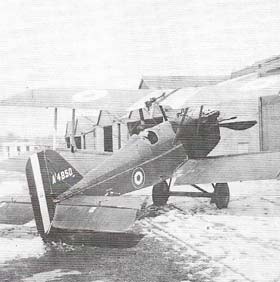 |
| Captain Albert Ball, VC, was photographed in this SE5 at London Conley, Herts, in March 1917 and killed in it on 7 May. He was 20 years old. Ball shot down 44 German aircraft and, like Major Mick Mannock, VC, who with 73 victories was Britain's top World War I ace, was killed by machine-gun fire from the ground. The Royal Flying Corps sent 48 reconnaissance aircrafts to France in 1914: by the end of the war the Royal Air Force (formed on 1 April 1918) had 22,171 serviceable aircraft. The war cost the air services 16,823 killed, of whom 12,782 were officers. |
By 31 December 1917 there were 177,000 American troops in France, and less than a year later, at the Battle of Amiens (August 1918, 22,000 casualties) the end was in sight. At 11am on 11 November 1918 the shooting stopped.
